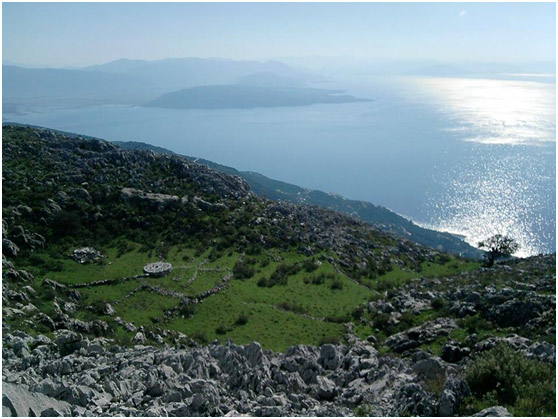
There was a time, not so long ago, that most people living in the Corfiot countryside were able to identify a large number of plants growing around them. These plants constituted an integral part of their everyday life and they were widely used for food, medicine, cleaning, weaving, religious and spiritual purposes, etc. These skills have been in decline ever since Corfu started to become an internationally acclaimed tourist destination in the 70s. People abandoned the cultivation of the land, animal husbandry and fishing – a life close to nature – to become waiters, barmen and receptionists, tying their lives to the summer visitors. Fortunately, there are still some people who retain a great part of this knowledge – knowledge that is core to the Corfiot identity, that is part of what was, not too long ago, the mainstream culture that permitted people to live in harmony with their part of the world and the planet as a whole
Life in the island’s countryside was to a great extent formed by the relationship between plants and people, and in the past parents did their best to make sure that this bond would remain healthy and strong in each generation by teaching their children about plants from a very early age.
On their way to the fields or while taking care of the animals, parents shared stories about plants, tasting a wild green with the children while talking. Toxic or in any other way dangerous plants were the first to be taught. Most of the people brought up in this way know very well the plants they should be careful with, although the reason why is not always clear nowadays.
Life before tourism was hard and very much depended on wild nature. Peasants cultivated the land, working hard in the fields from early dawn to dusk, but food was always scarce. Peasants didn’t own the land they worked on and the greater part of what they produced was taken by the landowner. Every member of the family who didn’t work in the fields helped sustain the family by finding food and medicine in the wild.
Plant identification and the knowledge of how to use plants for food, medicine, cloth cleaning, preserving food and many other uses were skills absolutely necessary to survival.
Things happened from time to time that people couldn’t address by themselves. Women, especially grandmothers, were the people with the most herbal knowledge in the family. Women living close by used to visit each other in the evening, and while their hands were working on a shared project, they talked about their troubles and worries, seeking advice from the others. That was the time they shared their knowledge about healing plants and mushrooms growing around them and the way to use them therapeutically.
Other moments, the expertise of a specialized “healer” was needed. Healers were both men and women. Usually, being a healer wasn’t a job. It was a talent and an inclination that people practiced together with their job or the housekeeping. Healers didn’t ask for money but people always felt the urge to give something back. Things like eggs, poultry, wine. Whatever there was available!
A healer could be a grandmother who, while walking to the field, people stopped here and there to ask for advice. These persons really shared their talent and knowledge from the heart, without expecting anything in return, not even recognition or gratitude.
In most villages, there was a bone setter, an orthodox Christian priest who advised people on physical and spiritual issues, a midwife, a witch/wizard or trance medium and, sometimes, a doctor who had to use herbs out of necessity since medicine was mostly unavailable and/or an herbalist. All of these people had knowledge of herbal medicine to different degrees.
Looking back to the past, following the traces of whatever has survived from life before tourism in the memories of the people that were children at that time is my way to reconnect with the spirit of the island I feel to be my home, the wisdom of our ancestors, the power to overcome all the financial, political and spiritual challenges of our time by knowing who we are (our strengths and our weaknesses), the joy of living in harmony with nature and our small human community. That was a hard time but people used to dance and laugh and enjoy a life that felt precious! May we all be inspired to integrate these skills and wisdom into our modern lives, in the way that will best serve each one of us!
